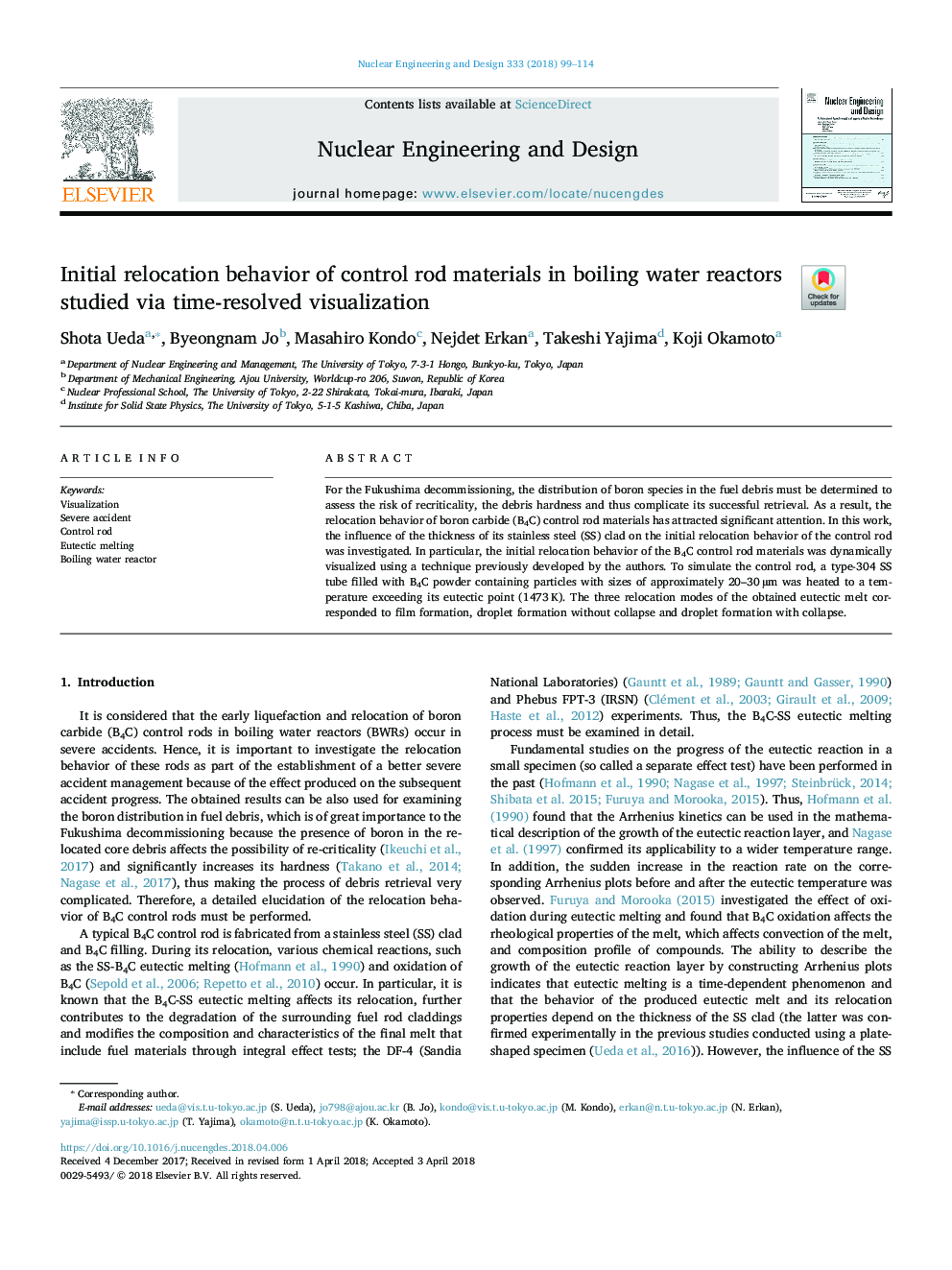| Article ID | Journal | Published Year | Pages | File Type |
|---|---|---|---|---|
| 6758799 | Nuclear Engineering and Design | 2018 | 16 Pages |
Abstract
For the Fukushima decommissioning, the distribution of boron species in the fuel debris must be determined to assess the risk of recriticality, the debris hardness and thus complicate its successful retrieval. As a result, the relocation behavior of boron carbide (B4C) control rod materials has attracted significant attention. In this work, the influence of the thickness of its stainless steel (SS) clad on the initial relocation behavior of the control rod was investigated. In particular, the initial relocation behavior of the B4C control rod materials was dynamically visualized using a technique previously developed by the authors. To simulate the control rod, a type-304 SS tube filled with B4C powder containing particles with sizes of approximately 20-30â¯Âµm was heated to a temperature exceeding its eutectic point (1473â¯K). The three relocation modes of the obtained eutectic melt corresponded to film formation, droplet formation without collapse and droplet formation with collapse.
Related Topics
Physical Sciences and Engineering
Energy
Energy Engineering and Power Technology
Authors
Shota Ueda, Byeongnam Jo, Masahiro Kondo, Nejdet Erkan, Takeshi Yajima, Koji Okamoto,
